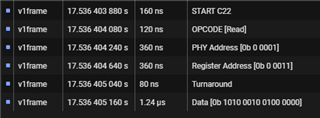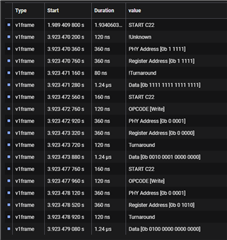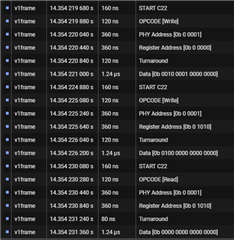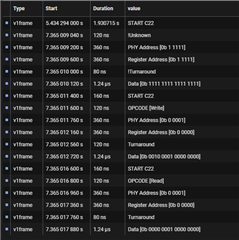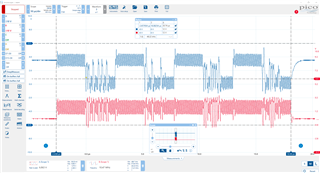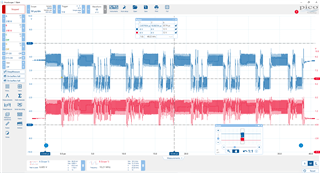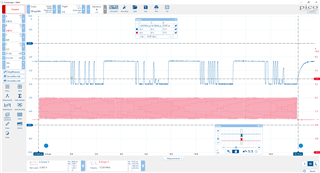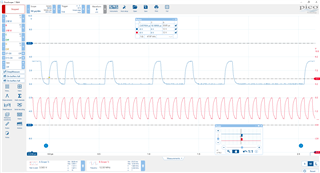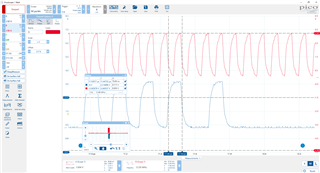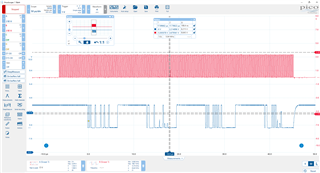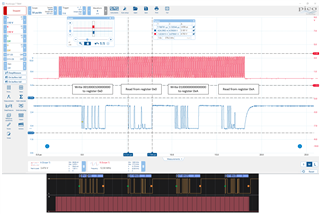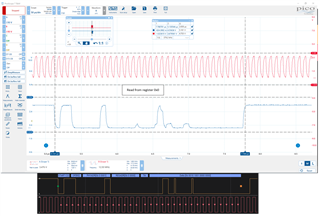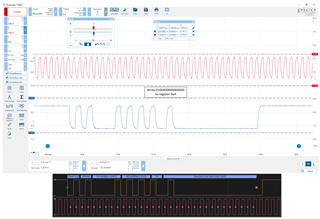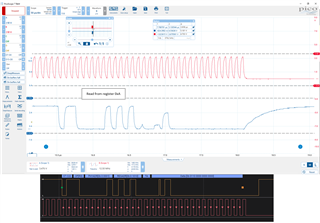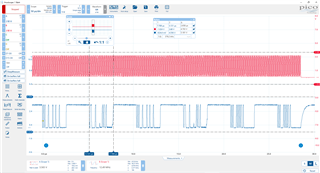Other Parts Discussed in Thread: ALLIGATOR
I'm using an FPGA to write to the PHY registers as I do with other PHYs.
I send 32 ONEs as a preamble followed by:
SOF 0b01
OPCODE 0b01 (for write)
PHY ADDR 0b00001 (per datasheet 8.5.3)
REG ADDR 0x00 (BMCR)
I set bits 8 & 13 = 1 and bit 12 = 0
Then same SOF/OPCODE/PHYADDR but REG ADDR 0x0A with bit 14 = 1 (for FX enable)
I'm not being successful with this.
Is there something I'm missing?


